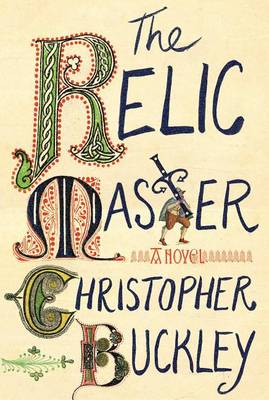Reviewed by gmcgregor on
Dismis manages to find himself in that fateful church at that fateful time because he is a relic hunter: he scours fairs where bits of bodies and artifacts whose owners claim that they're connected to the saints are for sale to the highest bidder. Many, many of them are obvious fakery, but for the ones that seem to have some shred of authenticity, Dismas buys them for his patrons. Those patrons then use the relics to raise money for the church. Or more like "for the church", as at least some of that funding gets diverted into the coffers of the church leaders themselves. This was a time when poverty as a godly virtue wasn't really a thing.
When Dismas finally decides it's time to get his life savings back from the banker he's been storing it with and retire, it's just in time to find out that banker has been arrested and put on trial for stealing his clients' money. Desperate, he and his good friend, the painter Albrecht Durer, conspire to forge perhaps the most famous relic in the world: the burial shroud of Jesus Christ. Dismas had long thought the shroud of Turin (known then as the shroud of Chambery because it lived in Chambery) was a fake, so he pretends to discover a new one, purporting to believe it is genuine. But the forgery is quickly discovered and Dismas' penance for his attempt to deceive is set: he has to go steal (or rather, relocate) the shroud of Chambery.
Accompanied by Durer, a handful of mercenary knights meant to keep him in line, and eventually Magda, a beautiful young woman they save from being tried as a witch, Dismas sets out for Chambery without much hope, or even a plan. From there there's a predictable romance and assorted hi-jinks, with lots of witty reparte and another set of potential thieves after the shroud to contend with. It's not bad by any stretch of the imagination, but for me, it didn't have that spark that I need to be charmed by a comedy. Despite being humorous, I wouldn't call it an easy read: the plot is very twisty and the large cast of characters can be hard to keep track of. It requires enough concentration that it's not an easy plane/vacation read, but it's too light to be Serious Literature. It's an awkward in-betweeny space and it didn't quite work for me.
Reading updates
- Started reading
- 25 June, 2016: Finished reading
- 25 June, 2016: Reviewed
